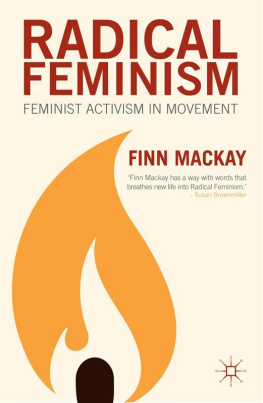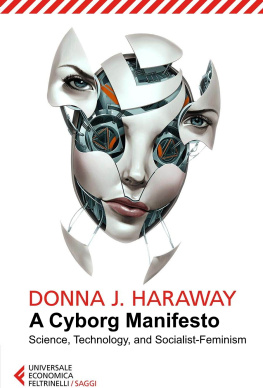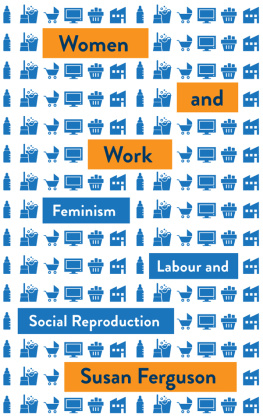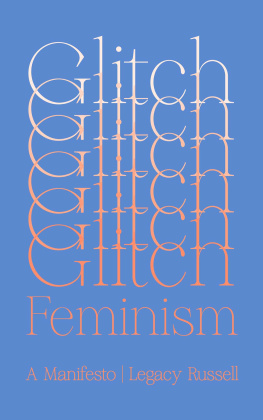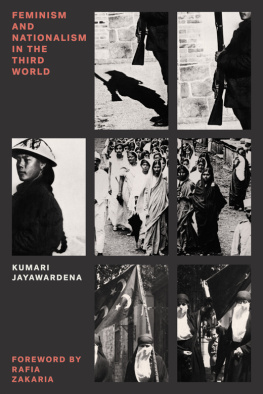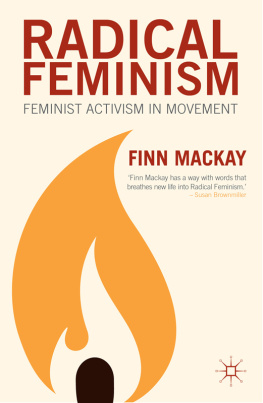Contents

Feminism for
the 99 Percent
Feminism for
the 99 Percent
A Manifesto
Cinzia Arruzza
Tithi Bhattacharya
Nancy Fraser

First published by Verso 2019
Cinzia Arruzza, Tithi Bhattacharya, Nancy Fraser 2019
All rights reserved
The moral rights of the authors have been asserted
1 3 5 7 9 10 8 6 4 2
Verso
UK: 6 Meard Street, London W1F 0EG
US: 20 Jay Street, Suite 1010, Brooklyn, NY 11201
versobooks.com
Verso is the imprint of New Left Books
ISBN-13: 978-1-78873-442-4
ISBN-13: 978-1-78873-444-8 (UK EBK)
ISBN-13: 978-1-78873-445-5 (US EBK)
British Library Cataloguing in Publication Data
A catalogue record for this book is available from the British Library
Library of Congress Cataloging-in-Publication Data
A catalog record for this book is available from the Library of Congress
Typeset in Sabon by Hewer Text UK Ltd, Edinburgh
Printed and bound by CPI Group (UK) Ltd, Croydon, CR0 4YY
For the Combahee River Collective,
who envisioned the path early on
and for the Polish and Argentine feminist strikers,
who are breaking new ground today
Contents
A fork in the road
In the spring of 2018, Facebook COO Sheryl Sandberg told the world that we would be a lot better off if half of all countries and companies were run by women and half of all homes were run by men, and that we shouldnt be satisfied until we reach that goal. A leading exponent of corporate feminism, Sandberg had already made a name (and a buck) for herself by urging women managers to lean in at the company boardroom. As former chief of staff to US Treasury Secretary Larry Summersthe man who deregulated Wall Streetshe had no qualms about counseling women that success won through toughness in the business world was the royal road to gender equality.
That same spring, a militant feminist strike shut down Spain. Joined by more than 5 million marchers, organizers of the twenty-four-hour huelga feminista called for a society free of sexist oppression, exploitation and violence for rebellion and a struggle against the alliance of the patriarchy and capitalism that wants us to be obedient, submissive and quiet. As the sun set over Madrid and Barcelona, the feminist strikers announced to the world, On March 8 we cross our arms, interrupt[ing] all productive and reproductive activity, declaring they would not accept worse working conditions, nor being paid less than men for the same work.
These two voices represent opposing paths for the feminist movement. On the one hand, Sandberg and her ilk see feminism as a handmaiden of capitalism. They want a world where the task of managing exploitation in the workplace and oppression in the social whole is shared equally by ruling-class men and women. This is a remarkable vision of equal opportunity domination: one that asks ordinary people, in the name of feminism, to be grateful that it is a woman, not a man, who busts their union, orders a drone to kill their parent, or locks their child in a cage at the border. In sharp contrast to Sandbergs liberal feminism, the organizers of the huelga feminista insist on ending capitalism: the system that generates the boss, produces national borders, and manufactures the drones that guard them.
Faced with these two visions of feminism, we find ourselves at a fork in the road, and our choice bears extraordinary consequences for humankind. One path leads to a scorched planet where human life is immiserated to the point of unrecognizability, if indeed it remains possible at all. The other points to the sort of world that has always figured centrally in humanitys most exalted dreams: a just world whose wealth and natural resources are shared by all, and where equality and freedom are premises, not aspirations.
The contrast could not be starker. But what makes the choice pressing for us now is the absence of any viable middle way. We owe the dearth of alternatives to neoliberalism: that exceptionally predatory, financialized form of capitalism that has held sway across the globe for the last forty years. Having poisoned the atmosphere, mocked every pretense of democratic rule, stretched our social capacities to their breaking point, and worsened living conditions generally for the vast majority, this iteration of capitalism has raised the stakes for every social struggle, transforming sober efforts to win modest reforms into pitched battles for survival. Under such conditions, the time for fence-sitting is past, and feminists must take a stand: Will we continue to pursue equal opportunity domination while the planet burns? Or will we reimagine gender justice in an anticapitalist formone that leads beyond the present crisis to a new society?
This manifesto is a brief for the second path, a course we deem both necessary and feasible. An anticapitalist feminism has become thinkable today, in part because the credibility of political elites is collapsing worldwide. The casualties include not only the center-left and center-right parties that promoted neoliberalismnow despised remnants of their former selvesbut also their Sandberg-style corporate feminist allies, whose progressive veneer has lost its shine. Liberal feminism met its waterloo in the US presidential election of 2016, when the much-ballyhooed candidacy of Hillary Clinton failed to excite women voters. And for good reason: Clinton personified the deepening disconnect between elite womens ascension to high office and improvements in the lives of the vast majority.
Clintons defeat is our wake-up call. Exposing the bankruptcy of liberal feminism, it has created an opening for a challenge to it from the left. In the vacuum produced by liberalisms decline, we have a chance to build another feminism: a feminism with a different definition of what counts as a feminist issue, a different class orientation, and a different ethosone that is radical and transformative.
This manifesto is our effort to promote that other feminism. We write not to sketch an imagined utopia, but to mark out the road that must be traveled to reach a just society. We aim to explain why feminists should choose the road of feminist strikes, why we must unite with other anticapitalist and antisystemic movements, and why our movement must become a feminism for the 99 percent. Only in this wayby connecting with anti-racists, environmentalists, and labor and migrant rights activistscan feminism rise to the challenge of our times. By decisively rejecting lean in dogma and the feminism of the 1 percent, our feminism can become a beacon of hope for everyone else.
What gives us the courage to embark on this project now is the new wave of militant feminist activism. This is not the corporate feminism that has proved so disastrous for working women and is now hemorrhaging credibility; nor is it the microcredit feminism that claims to empower women of the global South by lending them tiny sums of money. Rather, what give us hope are the international feminist and womens strikes of 2017 and 2018. It is these strikes, and the increasingly coordinated movements that are developing around them, that first inspiredand now embodya feminism for the 99 percent.
Thesis 1: A new feminist wave
is reinventing the strike.
The recent feminist strike movement began in Poland in October of 2016, when more than 100,000 women staged walkouts and marches to oppose the countrys ban on abortion. By the end of the month, an upwelling of radical refusal had already crossed the ocean to Argentina, where striking women met the heinous murder of Luca Prez with the militant cry: Ni una menos. Soon it spread to Italy, Spain, Brazil, Turkey, Peru, the United States, Mexico, Chile, and dozens of other countries. From its origins in the streets, the movement then surged through workplaces and schools, eventually engulfing the high-flying worlds of show business, media, and politics. For the last two years, its slogans have resonated powerfully across the globe: #NosotrasParamos, #WeStrike, #VivasNosQueremos, #NiUnaMenos, #TimesUp, #Feminism4the99. At first a ripple, then a wave, it has become a massive tide: a new global feminist movement that may gain sufficient force to disrupt existing alliances and redraw the political map.



